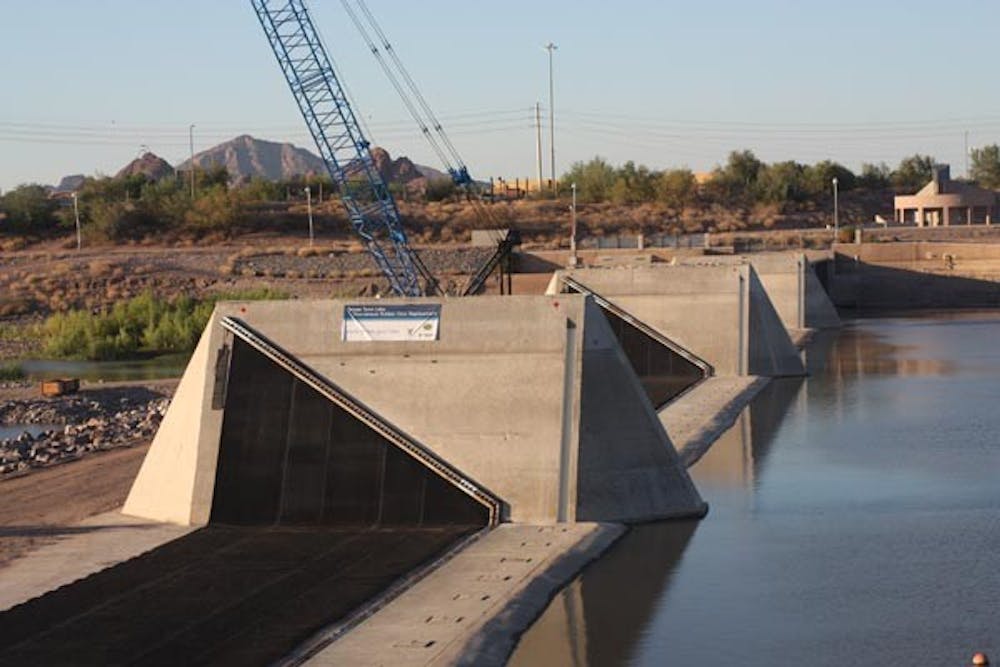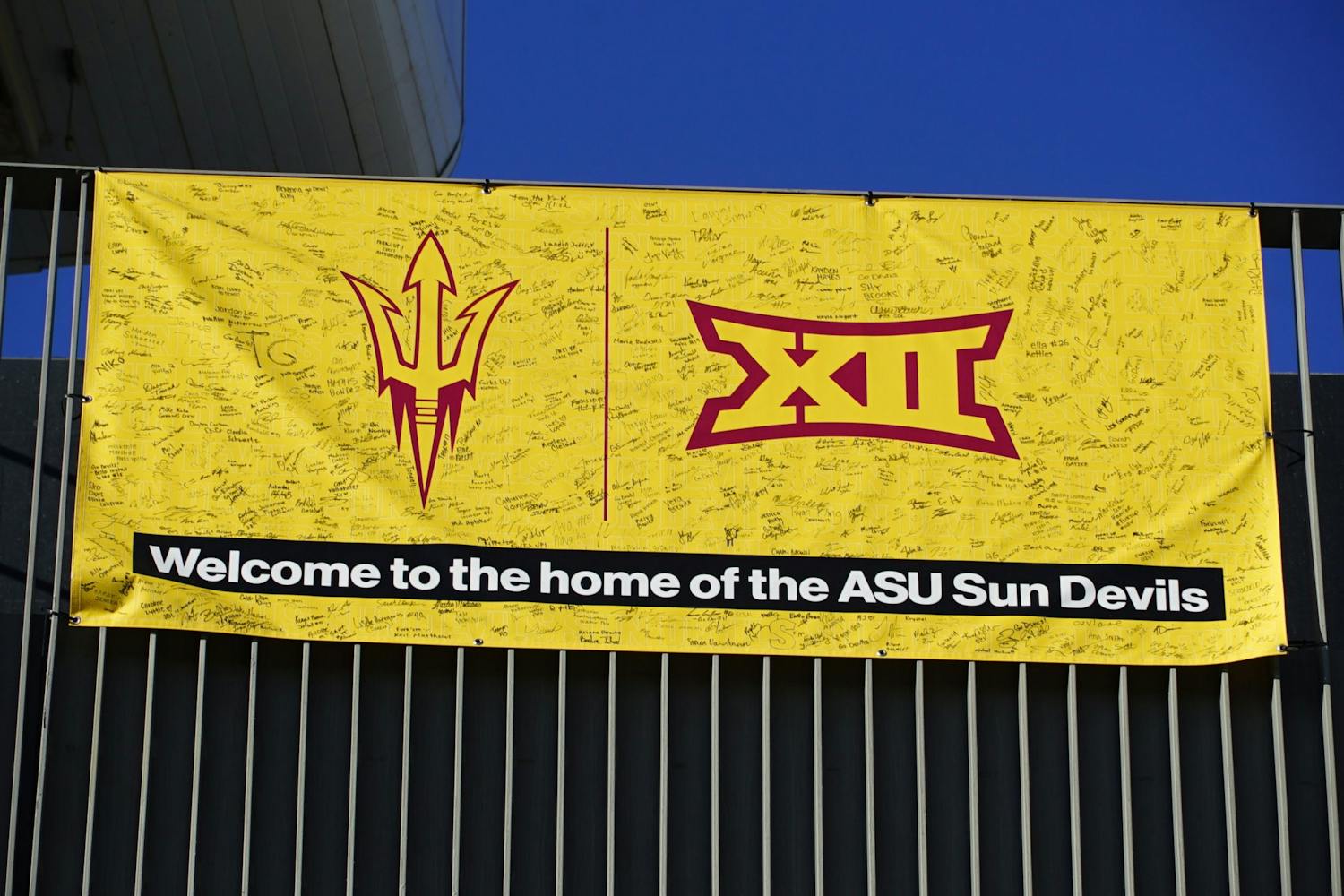After two months of construction, the Tempe Town Lake is almost ready to be refilled, a city official said Wednesday. A pedestrian bridge running over the lake’s new dam is also in the process of being installed.
One of the four rubber bladders of the lake’s west dam burst on July 20. Tempe officials placed the blame on extreme heat exposure and the age of the bladders, which they were already planning to replace.
PLS Construction, a Texas-based company that is currently working on the new dam, is waiting to install a fourth bladder that should arrive in late October or early November.
“We’re pretty much done down there,” said PLS project manager Adam Gordon.
Gordon added that the lake can begin being filled while the company is waiting for the fourth bladder, which is being manufactured in Japan. In the mean time, the company has installed a coffer dam, a temporary dam used for construction purposes.
Though the lake is scheduled to be open to the public Nov. 1, the coffer dam could allow the city to open the lake sooner, said Kris Baxter-Ging, a spokeswoman for the city of Tempe.
“We’re ahead of schedule.” Baxter-Ging said.
Gordon estimated the cost to the city of Tempe to be $2.1 million, less than the company’s initial estimate of $2.5 million. He added that PLS will credit the city for the difference.
Baxter-Ging said the Arizona Department of Water Resources must inspect the dam and the bladders before the lake can be filled with water.
“We’re just waiting for their OK to bring in the water,” Baxter-Ging said.
She added that a date had not been set for inspection at this time, but she expects the re-opening to be a very important moment in Tempe’s history.
“People love this lake,” Baxter-Ging said. “It will not only be a historic moment, but also a very personal one.”
She said interest in the lake actually increased rather than decreased during the rebuilding effort. Local businesses that usually experience a slow period in July, such as the Tempe Center for the Arts next to the lake, have seen an increase in operations.
She added that because the repair-based construction on the lake was almost completed, focus has shifted to preparing a pedestrian bridge over the lake, which is set to be finished next May. Stinger, a welding company from Coolidge, Ariz., is building the bridge and PCL is preparing the lake for the installation.
Tim Lines, managing vice president of Stantec, a Canada-based engineering firm that helped analyze the integrity of the concrete being used, said the bridge, in addition to adding to the visitor appeal, will provide temperature control to the bladders in the summer months.
Lines said the bridge will provide shade to the bladders, and will also feature a sprinkler system that will filter water from the lake and spray the bladders to cool them if they reach certain temperatures.
“It will be structured similar to the air conditioning unit in your house,” Lines said.
Baxter-Ging said extreme heat was a major factor in the failure on the bladders in July.
Lines said the current bladders were a bit more advanced, since the original bladders were roughly 11 years old, and technology had improved since then.
Reach the reporter at michael.reppenhagen@asu.edu





